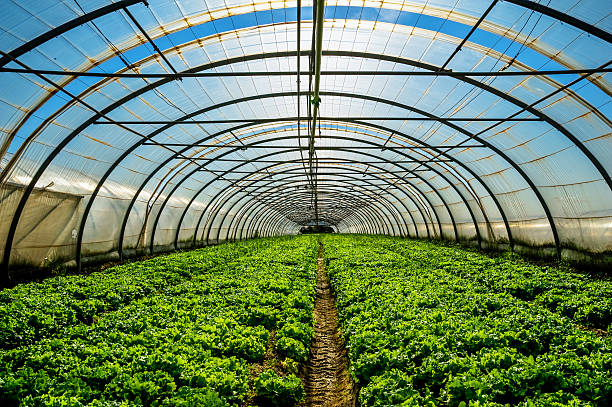Farm to Table Vision: Monarch Farm Greenhouse Utah Agricultural Marvels
Wiki Article
The Future of Greenhouses: Developments in Lasting Agriculture
Are you curious about the future of greenhouses and how they are reinventing sustainable agriculture? From advanced climate control systems to vertical farming methods, water-efficient watering methods, renewable energy integration, and clever data analytics, these developments are transforming the way we grow our food.Advanced Climate Control Solution
To achieve optimal growing problems, you can rely upon the developments in greenhouses with advanced climate control systems. These systems have actually changed the method we grow crops, offering a controlled environment that contributes to plant development. With these cutting-edge systems, you can now adjust temperature, moisture, light degrees, and also carbon dioxide concentrations to develop the perfect conditions for your plants to grow.Among the essential features of these innovative environment control systems is their capability to regulate temperature level. By making use of sensors and automated controls, the greenhouse can adjust the temperature level based upon the particular demands of the plants. This makes certain that they are never exposed to severe heat or cool, which can be damaging to their development.
Moisture control is another crucial facet of these systems. By preserving the suitable moisture degrees, you can stop issues such as mold and mildew, mildew, and illness from affecting your plants. These systems can also control the quantity of light that reaches the plants, ensuring that they obtain the optimal quantity for photosynthesis.
Furthermore, advanced environment control systems can also manipulate CO2 focus. By enhancing the degrees of CO2 in the greenhouse, you can improve plant development and productivity. This is particularly useful in locations with low natural carbon dioxide degrees.
Vertical Farming Methods
One important vertical farming technique is utilizing stacked expanding systems. Stacked growing systems are frequently utilized in urban areas where space is restricted.One popular technique is called vertical hydroponics, where plants are grown in nutrient-rich water without dirt. This method is very reliable as it reduces water usage by as much as 90% compared to standard farming techniques. Additionally, considering that the plants are expanded inside your home, they are safeguarded from bugs and illness, decreasing the need for pesticides.
Another method is aeroponics, which entails suspending the plant roots in a mist or air setting. This method permits optimal nutrient absorption and oxygenation, causing faster development and higher yields. Aeroponics additionally makes use of much less water than conventional farming and can be executed in vertical systems, making it a prominent option for vertical farming.
Water-efficient Watering Approaches
When it comes to implementing water-efficient watering techniques in sustainable farming,Making the most of water preservation is necessary. With worldwide water deficiency ending up being these details a pressing concern, it is critical to establish innovative strategies that optimize water use in greenhouse operations.One appealing method is drip watering, which supplies water directly to the plant origins, reducing waste and dissipation. By utilizing a network of tubes with little emitters, water is applied slowly and specifically, making certain that plants receive the needed moisture without excess overflow.
One more reliable strategy is making use of dirt dampness sensing units. These gadgets gauge the wetness web content in the soil and supply real-time information to farmers. By keeping an eye on the dirt's dampness levels, farmers can properly identify when and exactly how much water to apply, stopping over-irrigation.
Additionally, the execution of rain harvesting systems is acquiring appeal in greenhouse agriculture. click here to find out more Gathering rain from roofs and saving it in tanks allows farmers to utilize this natural deposit for irrigation functions, minimizing dependence on typical water resources.
Finally, the adoption of automated irrigation systems can dramatically boost water efficiency. These systems utilize sensors to find dirt dampness levels and climate condition, readjusting watering timetables appropriately. By enhancing water usage based on actual plant demands, these systems can lower water waste and promote lasting farming methods.
Renewable Energy Combination
Eco-friendly power integration in greenhouses offers several advantages, consisting of lowered operating expenses and decreased reliance on non-renewable power sources. The generated power can after that be used to run different operations within the greenhouse, such as lights, heating, and ventilation systems. These generators harness wind power and transform it right into power, which can be made use of to supplement the power needs of the greenhouse.Smart Data Analytics and Automation
To enhance the effectiveness of your greenhouse visit this site procedures and optimize source usage, consider carrying out wise data analytics and automation. Smart information analytics involves gathering and evaluating information from different sensing units and devices within your greenhouse.
This can include automating the control of illumination, air flow, watering systems, and nutrient delivery. By automating these procedures, you can ensure that your plants get the appropriate problems and nutrients at the best time, without the requirement for consistent manual intervention.
Additionally, clever data analytics and automation can collaborate synergistically. The data accumulated by sensors can be used to inform automatic systems, enabling them to make real-time changes based on the current conditions. This combination of data analytics and automation can bring about more effective and specific resource allotment, inevitably resulting in greater yields and better crop quality.
Conclusion
In conclusion, the future of greenhouses in sustainable farming looks encouraging. With innovative climate control systems, upright farming methods, water-efficient irrigation methods, and eco-friendly energy assimilation, greenhouses are ending up being much more efficient and eco friendly.
By enhancing water usage based on actual plant requirements, these systems can minimize water waste and advertise lasting farming techniques.

Report this wiki page